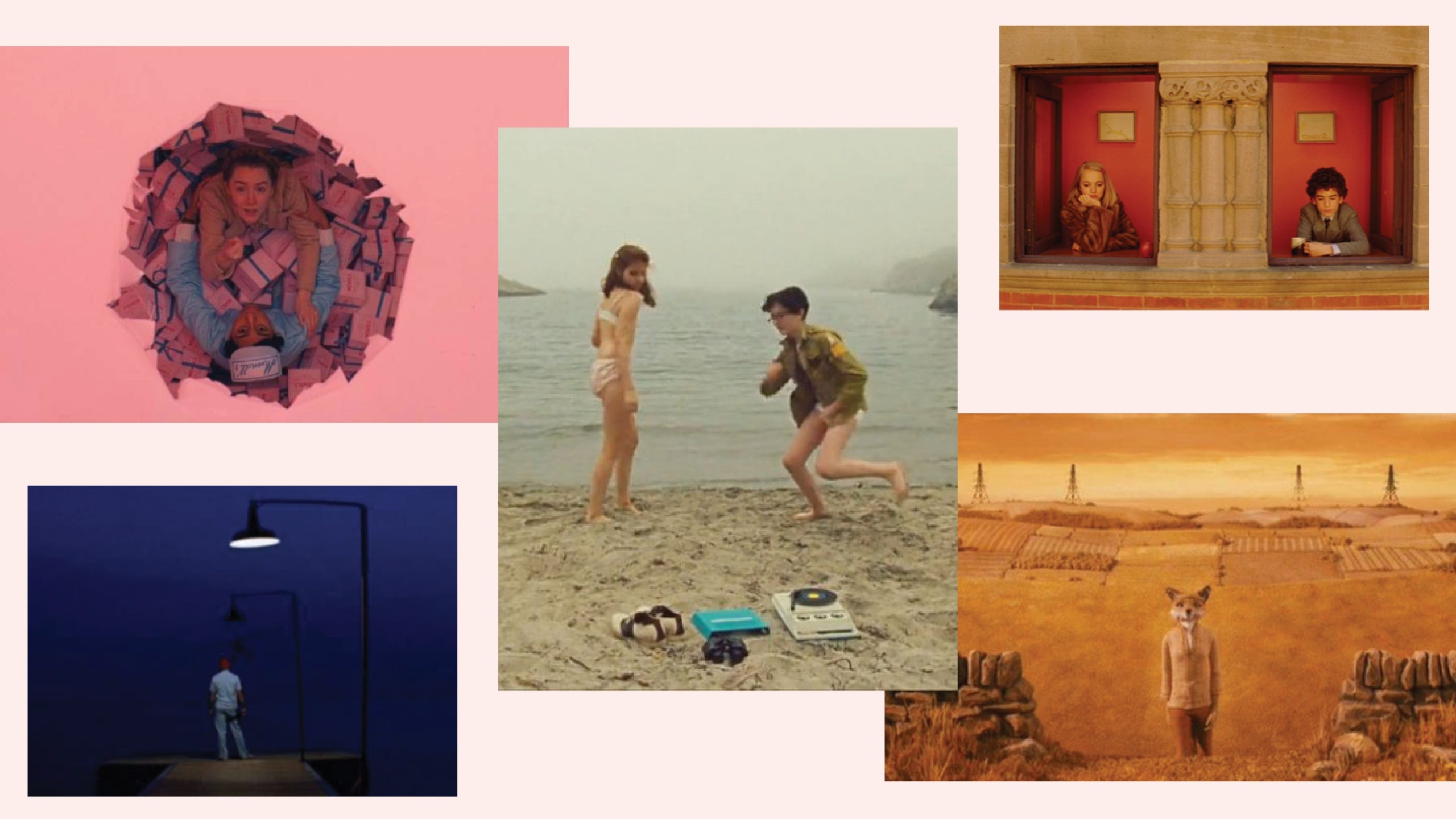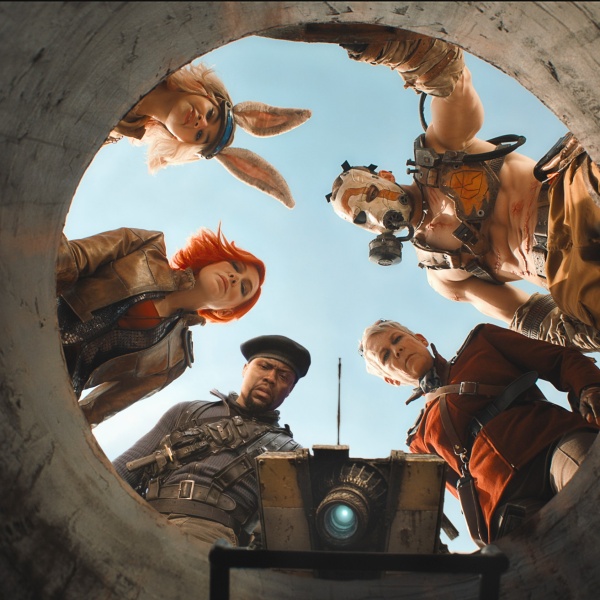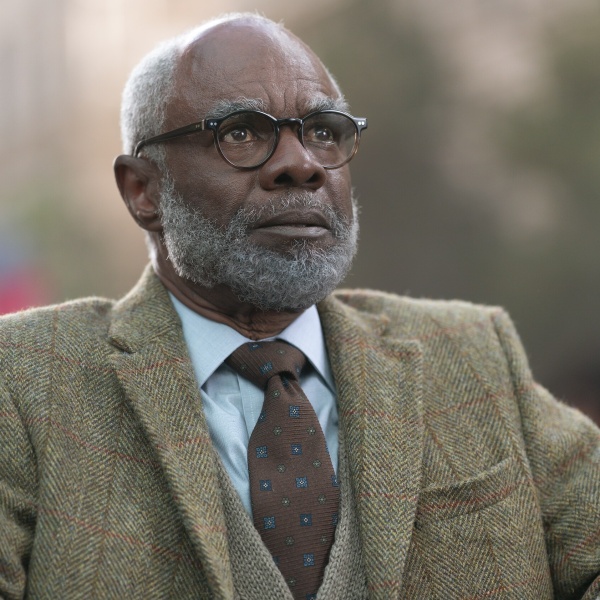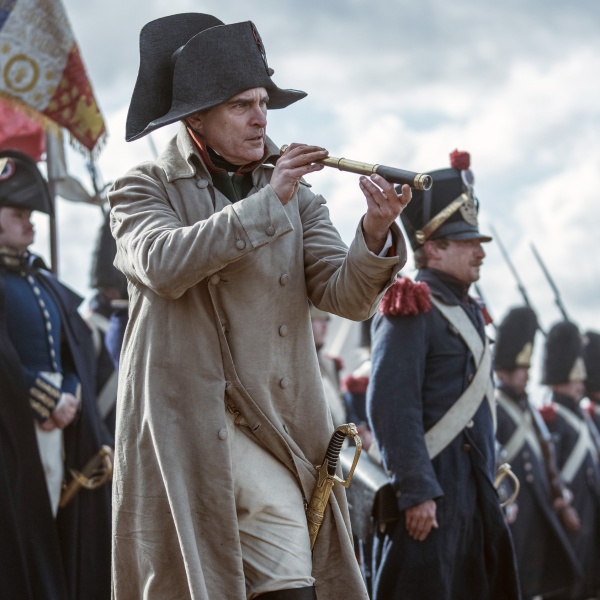Over the last nearly 25 years and counting, Wes Anderson and Robert Yeoman have been one of cinema’s most essential director-cinematographer pairings. The filmmaking duo has crafted a signature style that has made Anderson one of the most recognizable auteurs in film history. One look at the frame is all it takes to know you’re watching a Wes Anderson film, whether it’s the hyper-stylized set design, the meticulous symmetry of a composition, or the precision of lateral camera movements.
Anderson has always been a highly visual filmmaker, going back to his acclaimed debut “Bottle Rocket” and his breakout sophomore work “Rushmore.” But over the years, his work has only gotten more and more stylized and meticulous in his compositions; compare “The French Dispatch” to “Rushmore,” and the latter feels practically loose and rough in comparison. It’s a cliché that every move Wes Anderson makes is a little more Wes Anderson than the very last — but when the results are as beautiful as they are, it’s hard to complain.
Although he’s 11 features deep into his career, Anderson shows no signs of slowing down as an artist and filmmaker. His latest movie, June’s “Asteroid City,” is one of his single most acclaimed, drawing raves for its heartbreaking story of grief and thoughtful exploration of the nature of art. And it’s not his only movie this year; set for release on Netflix this October after a Venice Film Festival Premiere, “The Wonderful World of Henry Sugar” is Anderson’s first short film. An adaptation of Roald Dahl’s short story collection of the same name, the film will star Benedict Cumberbatch in the title role, alongside Ralph Fiennes, Dev Patel, Ben Kingsley, Rupert Friend, and Richard Ayoade.
With “Asteroid City” now streaming on Peacock, we’ve refreshed our list of the best shots in Anderson’s catalogue. Entries are unranked, and listed in order of film release.
[Editor’s note: This list was originally published in June 2019, and has been updated multiple times.]
-
“Bottle Rocket” (1996)

Image Credit: Columbia Pictures Wes Anderson’s feature-length directorial debut arrived in 1996 with “Bottle Rocket,” starring Owen and Luke Wilson. Anderson co-wrote the script with Owen Wilson. The film marked an important first collaboration between Anderson and cinematographer Robert Yeoman, who had become a DP to watch after working on such titles as Gus Van Sant’s “Drugstore Cowboy.” Anderson and Yeoman showed off an impressive utilization of space in their first parternship, finding ways to increase the isolation and loneliness of their characters with blocking that heightens the space around them.
-
“Bottle Rocket” (1996)

Image Credit: Columbia Pictures Representing character relationships through blocking has long been the utmost priority for Anderson and Yeoman. Just look at how the duo block Anthony (Luke Wilson) and Inez (Lumi Cavazos) as their characters are falling in love. Using the railing to divide Anthony from Dignan (Owen Wilson) creates dramatic tension visually over how the relationship might affect their friendship.
-
“Rushmore” (1998)

Image Credit: Buena Vista Pictures Anderson and Yeoman’s precision when it comes to nailing visual patterns remains unmatched in cinema. A delightful sequence in Anderson’s 1998 coming-of-age comedy “Rushmore” details all of the clubs run by main character Max Fisher (Jason Schwartzman), each shot positioning Max in the center of the frame to visualize his perfection and need for control.
-
“The Royal Tenenbaums” (2001)

Image Credit: Buena Vista Pictures Yeoman relied on widescreen anamorphic lenses to shoot the interior scenes of “The Royal Tenenbaums” so that the characters would often find themselves trapped at the center of their own possessions. As the cinematographer told ASC Magazine, “One thing I like about shooting anamorphic is that you can have a few characters all together and still be very close to them, which helps you avoid a cut…There are many shots in ‘The Royal Tenenbaums’ where there’s one person in the dead center of the frame with other things in the room that are sort of arranged into the edges. And then there are shots with about nine people arranged in the frame. You can just make a greater variety of staging work in widescreen.”
-
“The Royal Tenenbaums” (2001)

Image Credit: Buena Vista Pictures Anderson attracted major star power for his third feature film, “The Royal Tenenbaums,” which cast Ben Stiller, Gwyneth Paltrow, Anjelica Huston, and Gene Hackman in major roles. The director and Yeoman got even more aggressive with their methodical style here, especially when it came to vibrant production design, blocking through set design (see this shot of windows dividing young Margot and Chas), and deploying camera pans. All three elements have become trademarks of Anderson’s style.
-
“The Royal Tenenbaums” (2001)

Image Credit: Buena Vista Pictures One of Anderson’s most sweeping shots arrives when Gwyneth Paltrow’s Margot Tenenbaum steps off the Green Line bus and makes her way toward Luke Wilson’s Richie Tenenbaum. The two characters are secretly in love. Anderson’s camera tracks Margot from the front, creating a gliding effect for the character that, combined with the popping green of the bus and beige of Margot’s coat, feels dreamlike. The use of Nico’s “These Days” is one of Anderson’s best musical cues.
-
“The Royal Tenenbaums” (2001)

Image Credit: Buena Vista Pictures Anderson’s violence can often be playful (see “Fantastic Mr. Fox” and “Moonrise Kingdom”), but one of his more graphic moments arrives when “The Royal Tenenbaums” relives Richie’s suicide attempt. A point-of-view shot from Richie’s perspective as he looks down at his shorn hair and bloody wrists is all the more shocking by the meticulous pattern the hair makes on the white sink. Anderson’s blue lighting provides a chill, making for one of the most visceral shots of his career.
-
“The Life Aquatic with Steve Zissou” (2004)

Image Credit: Buena Vista Pictures With “The Royal Tenenbaums” and his 2004 follow-up feature “The Life Aquatic with Steve Zissou,” Anderson really honed in on his mastery of color. “Aquatic” keeps with its oceanic premise and uses shades of blue at key moments to mirror the interior states of Anderson’s characters. This shot of Bill Murray’s Steve Zissou standing at the far end of a dock and looking away from the camera heightens his depressive state, a feeling matched by the dark blue sky.
-
“The Life Aquatic with Steve Zissou” (2004)

Image Credit: Buena Vista Pictures One of the strengths Anderson has perfected over the years is gathering his sprawling casts into a single frame to create tableaus. The blocking is key, as Anderson and Yeoman use the poles of the boat’s frame to create a visual triptych that adds to the growing tension among the crew.
-
“The Life Aquatic with Steve Zissou” (2004)

Image Credit: Buena Vista Pictures Anderson and Yeoman repeat this porthole shot throughout “The Life Aquatic,” showing various characters at the center of the frame. The visual motif is effective in evoking the setting’s entrapping nature for characters like Anjelica Houston’s Jane, whose estranged relationship with Steve gets filtered through the coldness of the blue water.
-
“The Darjeeling Limited” (2007)

Image Credit: Fox Searchlight Anderson’s fifth feature, “The Darjeeling Limited,” cast Owen Wilson, Adrien Brody, and Jason Schwartzman as three brothers hoping to reconnect on a train trip across India. Anderson can dazzle with artificial sets, but to capture India he wisely decided to go natural with many of his exterior shots. The results are some of his most breathtaking establishing shots.
-
“The Darjeeling Limited” (2007)

Image Credit: Fox Searchlight “Wes likes to push you out of your comfort zone, and sometimes you’re put in very difficult situations,” Yeoman once told The Telegraph. “When we did ‘The Darjeeling Limited,’ we were shooting on a train and he really insisted that the train always had to be moving. And we had to shoot on a real train and not a set, so that presents a certain amount of logistical problems.”
-
“Fantastic Mr. Fox” (2009)

Image Credit: Fox To direct his first stop-motion animated feature, Wes Anderson took a break from working with Yeoman and hired Tristan Oliver, who made a name for himself in the genre as the DP of stop-motion classics like “Chicken Run” and the Oscar-winning “Wallace & Gromit: The Curse of the Were-Rabbit.” To capture this jaw-dropping shot, the two used seran wrap to create the waterfall effect. Never has lonliness been so heartbreakingly beautiful.
-
“Fantastic Mr. Fox” (2009)

Image Credit: Fox A key crew member on the set of “Fantastic Mr. Fox” was production designer Nelson Lowry, who worked closely with Anderson and Oliver to set up the memorable look of the film. Lowry’s work designing the farm is a major reason Anderson’s establishing shots are so jaw-dropping to behold.
-
“Fantastic Mr. Fox” (2009)

Image Credit: Fox Lowry and Anderson started designing the world of “Fantastic Mr. Fox” by prioritizing the color theory needed to bring the settings to life. “It was a limited color palette, quite unusual for an animated film,” Lowery told Coming Soon in 2009. “There was no blue or green. [It was mostly] autumnal colors.” The decision gives many of Anderson’s shots a rustic and warm atmosphere, perfect for the themes of family running through the center of the story.
-
“Moonrise Kingdom” (2012)

Image Credit: Focus Features Perhaps the most charming moment in “Moonrise Kingdom” arrives when Suzie and Sam take to their private hideaway beach for an impromptu dance set to Francoise Hardy’s “Les Temps de l’Amour.” Anderson and Yeoman capture the moment in a single stationary take so that the characters’ uninhibited dance moves become amplified as the only motion in the shot. It’s one of Anderson’s most infectious and lovable frames.
-
“Moonrise Kingdom” (2012)

Image Credit: Focus Features The opening of “Moonrise Kingdom” and the way Anderson frames the Bishop family in their self-contained rooms tells the viewer everything they need to know about the group’s disconnectedness. This shot of Suzie’s parents (played by Frances McDormand and Bill Murray) is a visual representation of their broken marriage, the dried up browns and autumnal lighting only adding to the marriage’s atmosphere of decay.
-
“Moonrise Kingdom” (2012)

Image Credit: Focus Features Anderson reunited with Yeoman for “Moonrise Kingdom,” which they shot at various locations around Narragansett Bay, Rhode Island. Anderson’s quirkiest touches, like this binocular shot, can often divide critics when it comes to his work. For diehard Anderson fans, it’s these shots that prove utterly delightful.
-
“Moonrise Kingdom” (2012)

Image Credit: Focus Features Wes Anderson and Roman Coppola were Oscar-nominated for Best Original Screenplay, but somehow Yeoman’s cinematography failed to gain recognition from the Academy. Anderson and Yeoman expertly play with space to tell the story of their star-crossed lovers (as in this wide shot), and Yeoman’s color pattern calls to mind “Fantastic Mr. Fox” for how the yellows and greens create a dusty and timeless feeling.
-
“Moonrise Kingdom” (2012)

Image Credit: Focus Features Anderson’s Khaki Scouts treehouse is one of his most inventively realized sets. As production designer Adam Stockhausen told The New York Times, “It took a few rounds to get to the final idea of this, because I kept drawing it at a reasonable, safe height, and it just wasn’t funny. So Wes kept having me make it taller and taller and taller until it became crazy high.” The treehouse got so high that Stockhausen had to tie two trees together in order to support the structure.
-
“Moonrise Kingdom” (2012)

Image Credit: Focus Features This shot of Suzie Bishop atop her family’s lighthouse has become one of Anderson’s most identifiable images. The vibrant pop of orange against the blue sky, and the precision of the blocking so that Suzie divides the frame into identical halves, defines so much of what makes Anderson one of the world’s most beloved auteurs.
-
“The Grand Budapest Hotel (2014)

Image Credit: Searchlight Pictures Eye-popping is the only appropriate word to describe Anderson’s use of miniature models in “The Grand Budapest Hotel,” starting with the eponymous building itself. Production designer Adam Stockhausen told The New York Times the image was inspired by “the color-rich paintings of the 19th-century landscape artist Caspar David Friedrich. They had Michael Lenz, an artist, recreate Friedrich’s style in a painting on the wall in the hotel’s dining room, and that look made its way to the background.” The production team “also looked through hotel archives and studied the architecture of locales like the Grandhotel Pupp in Karlovy Vary, Czech Republic” in order to get the architecture of the miniature just right.
-
“The Grand Budapest Hotel” (2014)

Image Credit: Fox Searchlight Yeoman finally landed his first Oscar nomination for Best Achievement in Cinematography thanks to Anderson’s “The Grand Budapest Hotel.” Widely considered Anderson’s crowning achievement, the film is an overwhelming feast of perfect shots that maximize some of the best production design and art direction of the 21st century.
-
“The Grand Budapest Hotel” (2014)

Image Credit: Fox Searchlight “There was an old department store [in Görlitz, Germany] that was up for lease and that no one was occupying at the time, so [Wes] went to visit it and it was like five floors up and there was a beautiful skylight on top,” Yeoman told The Telegraph about finding the location for the hotel. “It was kind of a perfect place because they put the production offices and wardrobe people and the camera room all up on the top two floors, and the other floors kind of became our hotel.”
-
“The Grand Budapest Hotel” (2014)

Image Credit: Fox Searchlight Anderson inventively plays with the viewer’s imagination throughout “Grand Budapest,” swapping real sets for miniatures so often that the film takes on something of a fantastical quality. One of the film’s nine Academy Award nominations included Best Production Design.
-
“The Grand Budapest Hotel” (2014)

Image Credit: Fox Searchlight When Anderson and Yeoman need you to fall in love with a character, they know how to craft the perfect close-up to make it happen (see Margot in “The Royal Tenenbaums). This shot of Saoirse Ronan’s Agatha is perhaps Anderson’s dreamiest. Keeping Ronan’s angelic face in the center of the frame and having a haze of swirling lights spin around her lets Anderson ensure that Agatha casts the same spell on the viewer as she does on Zero.
-
“The Grand Budapest Hotel” (2014)

Image Credit: Fox Searchlight The art design in “The Grand Budapest Hotel” is so visually arresting and in tune with Anderson’s love for symmetrical framing that many times it doesn’t matter where the camera is pointing because perfect shots are everywhere. This God’s eye shot of the hotel’s concierge desk is as Anderson-ian as Anderson gets.
-
“Isle of Dogs” (2018)

Image Credit: Fox Searchlight Anderson reunited with his “Fantastic Mr. Fox” cinematographer Tristan Oliver when it came to making his second stop-motion animated movie, “Isle of Dogs.” Incorporating the widescreen photography of the Western genre, the duo’s best shots (like this golden explorer image) combine classic compositions with the stylistic freshness that has become a lynchpin of Anderson’s work.
-
“Isle of Dogs” (2018)

Image Credit: Fox Searchlight Anderson has credited the works of Akira Kurosawa and Hayao Miyazaki with inspiring the look of “Isle of Dogs,” which earned the filmmaker his second Oscar nomination for Best Animated Feature after “Fantastic Mr. Fox.” One of the film’s best sequences, a showdown between rival canine packs, has the visual composition of a classic Western duel.
-
“Isle of Dogs” (2018)

Image Credit: Searchlight Pictures The best shots in “Isle of Dogs” combine the tangible textures of miniatures with the “how are they doing that?” style that comes from stop-motion animation and a sly use of visual effects. It was hardly a surprise when the Academy announced Anderson’s animated movie made the Oscars shortlist for Best Visual Effects. Only two other animated films, “Kubo and the Two Strings” in 2017 and “The Nightmare Before Christmas” in 1994, had made the VFX shortlist becfore “Isle of Dogs” and “The Incredbiles 2” made the cut in the same year.
-
“The French Dispatch” (2021)

Image Credit: ©Searchlight Pictures/Courtesy Everett Collection Anderson is often known for his use of color in his films, but he and Yeoman are just as capable of creating a great black-and-white image. Take the gorgeous black-and-white sequences seen throughout “The French Dispatch,” including the first story, which is entirely devoid of color. One of the most gorgeous images of the film sees the ensemble of the first story gather around to look at the work of incarcerated artist Moses (Benicio Del Toro), creating a memorable and eye-pleasing tableau.
-
“Asteroid City” (2023)

Image Credit: ©Focus Features/Courtesy Everett Collection One of Anderson and Yeoman’s greatest skills is how they use negative space and distance to convey relationships between characters. One of the best examples of this is “Asteroid City’s” recurring scenes featuring single parents Augie (Jason Schwartzman) and Midge (Scarlett Johansson), talking and lightly flirting from the windows of their rental homes. Although the attraction between the two is there, past heartbreaks create an emotional barrier — reflected in the vast desert landscape seen between them.






